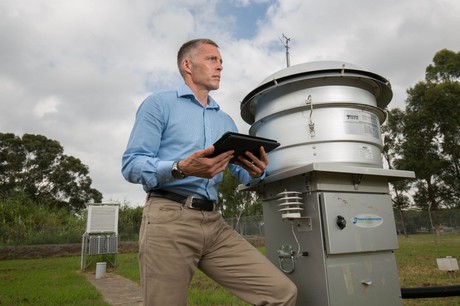Lead contamination not caused by mining? Myth busted

Macquarie University researchers have busted the ‘miner’s myth’ that exists in Broken Hill and other mining towns, which implies that non-mining-related sources of lead are the cause for high environmental lead contamination levels within the community.
Writing in the journal Environmental Geochemistry and Health, co-authors Louise Kristensen and Mark Taylor note that resource companies, government agencies and employees often construct ‘myths’ to downplay potential exposure risks and responsibility arising from operating emissions. These myths tend to blame environmental contamination levels on alternative causes such as natural weathering of the ore body that leads to contaminant dispersal; other sources of lead such as paint and petrol; or on legacy issues that are not related to current operations.
“As we went through how contamination would actually have occurred in each of these scenarios, we found that there was little to no evidence for the environmental lead contamination observed around Broken Hill to have occurred in these ways,” Professor Taylor said.
“First, our study showed that environmental contamination post-dates mining activities because historic soil samples from the late 19th century showed significantly less contamination than contemporary soils.
“Second, weathering of the ore body would only result in a limited increase of contamination close to the mined region, and cannot explain high levels of lead and other metals in surface soils across the wider Broken Hill city area.
“Third, leaded paint or petrol is also highly improbable as a significant source of environmental lead, because contamination was evident away from residential areas where petrol was used in only small quantities. This means that suggesting old leaded paint or petrol are the primary sources of contamination is highly misleading.”
Lead isotope analysis clearly showed that environment accumulation of lead must have occurred relatively recently because only the surface soils could be ‘fingerprinted’ to match the source ore body. The deeper soils that would have formed since the formation of the ore body showed different results to the surface soils, which gave the researchers further reason to discount the natural weathering argument.
Further miner’s myths state that even if emissions are toxic, they are not deposited across the local town due to favourable wind patterns; and that the lead does not exist in a form that can be absorbed by biological organisms, termed ‘bioavailability’. But other studies have already shown that the lead in the soils and dust in and around Broken Hill is readily absorbed by the human body, meaning that it can definitely be deemed bioavailable.
“The creation of these myths has acted as a considerable barrier to proper strategies and restorative actions in mining towns across the planet,” Professor Taylor said. “Knowing the truth behind these myths will help mining communities move forward in addressing exposures in a positive and effective manner.”
NSW initiative tackles food waste at the source
Approximately 1.7 million tonnes of food waste is sent to landfill in the state each year.
NSW celebrates recycling triumph
Considerable progress has been made in the New South Wales recycling sector, with the state now...
REMONDIS expands into Western Qld
The Australian branch of the German multinational, which specialises in recycling, industrial...







